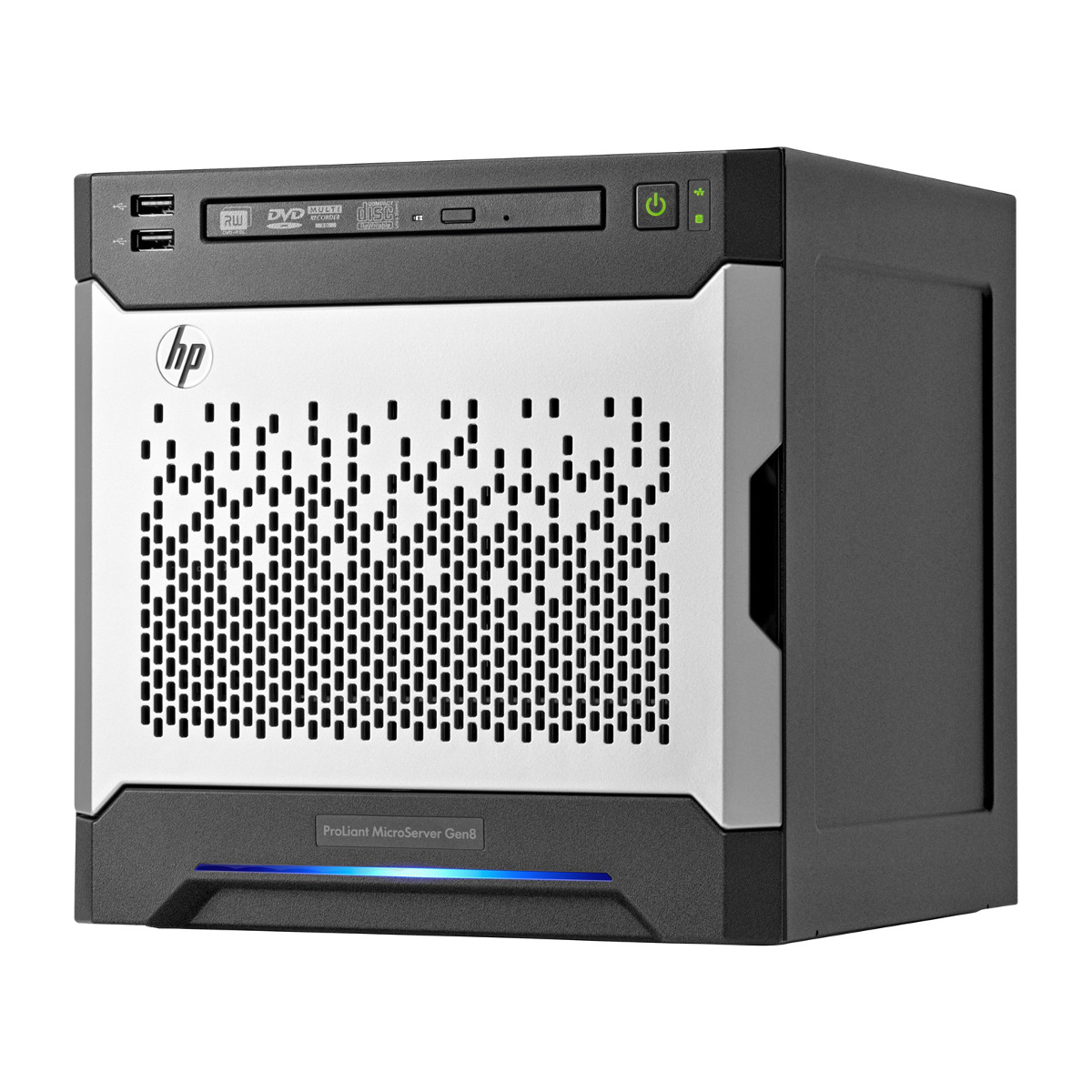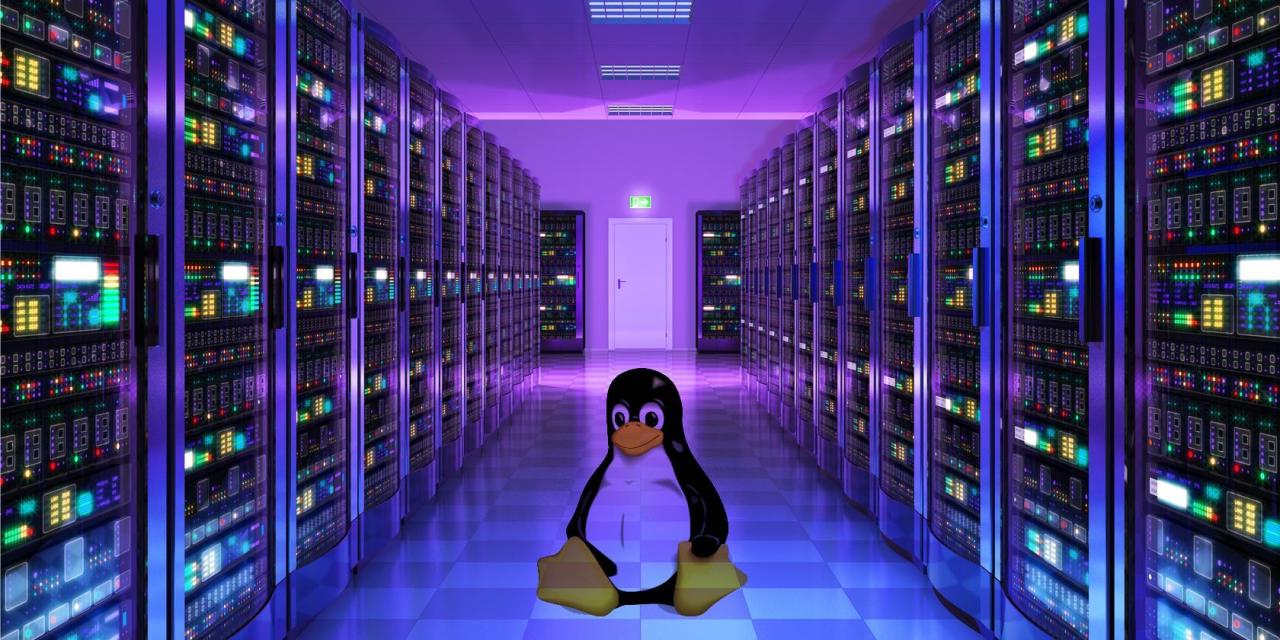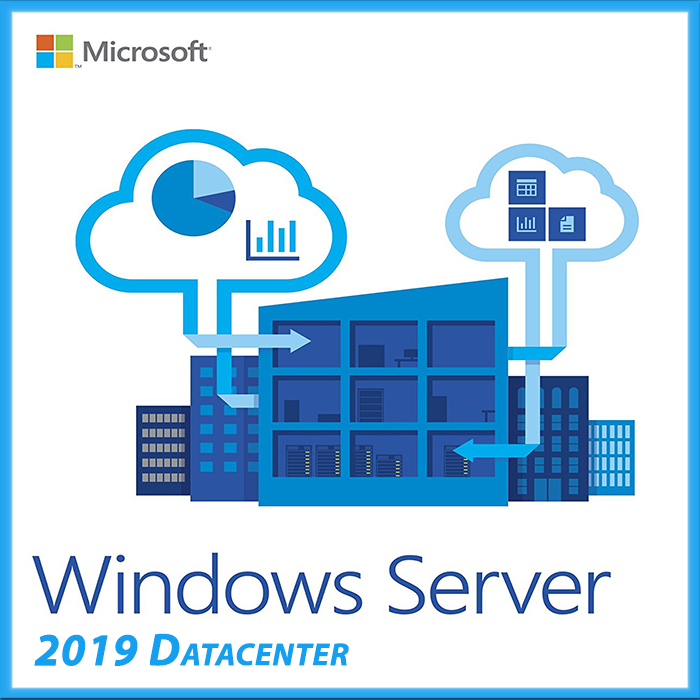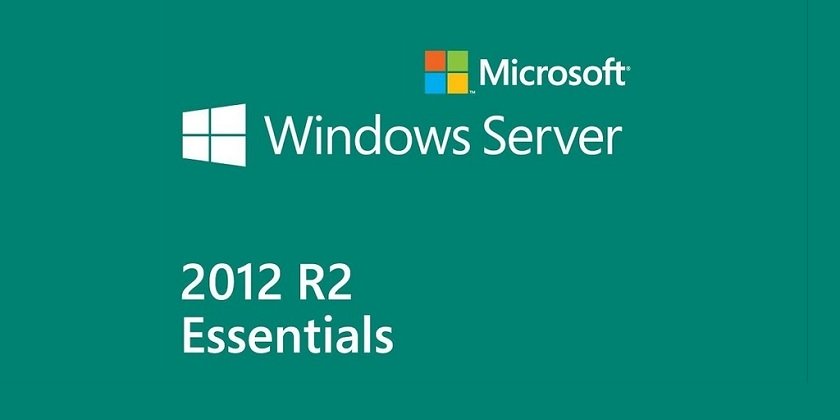Blade servers, a modern marvel of data center technology, revolutionize how we manage and scale computing power. These compact, high-density servers offer a compelling alternative to traditional server architectures, promising significant advantages in terms of space utilization, energy efficiency, and manageability.
Imagine a rack filled with numerous server blades, each a powerful computing unit, seamlessly integrated into a shared infrastructure. This configuration allows for greater density, meaning you can fit more processing power within a smaller footprint. Blade servers are designed for efficiency, sharing common components like power supplies and cooling systems, leading to reduced energy consumption and operational costs.
Blade Server Definition and Concept
Blade servers are a type of server architecture that offers a high level of density and efficiency compared to traditional server setups. They are characterized by their compact design, where multiple server modules, called blades, are housed within a shared chassis. This chassis provides essential components like power supplies, cooling systems, and network connectivity, allowing for optimized resource utilization and reduced space requirements.
Key Features and Characteristics
Blade servers are defined by several key features that distinguish them from traditional server architectures:
- High Density: Blade servers pack multiple server modules into a small physical space, enabling organizations to consolidate their IT infrastructure and reduce the overall footprint. This density translates to cost savings on space, power, and cooling.
- Shared Infrastructure: Blade servers share common resources, such as power supplies, cooling systems, and network connections, within the chassis. This shared infrastructure reduces redundancy and simplifies management, leading to increased efficiency.
- Modular Design: Blades are independent modules that can be easily added, removed, or replaced within the chassis. This modularity allows for flexible scaling and customization, adapting to changing business needs.
- Management Simplicity: Blade servers often come with centralized management tools that simplify tasks like monitoring, provisioning, and updating. These tools help reduce administrative overhead and improve overall system management.
Comparison with Traditional Server Architectures
Blade servers offer several advantages over traditional server architectures:
- Increased Density: Blade servers pack more computing power into a smaller space compared to traditional servers, allowing organizations to consolidate their IT infrastructure and save on space and energy costs.
- Enhanced Efficiency: Shared resources and centralized management tools in blade servers contribute to improved efficiency in terms of power consumption, cooling, and administrative overhead.
- Scalability and Flexibility: The modular design of blade servers allows for easy scaling and customization, enabling organizations to adapt to changing business needs without significant infrastructure changes.
- Reduced Costs: Blade servers can reduce overall IT costs by optimizing space utilization, energy consumption, and management complexity.
Blade servers are a powerful solution for organizations looking to optimize their IT infrastructure, improve efficiency, and reduce costs. They offer high density, shared resources, modular design, and centralized management capabilities, making them a compelling alternative to traditional server architectures.
Components of a Blade Server System
Blade servers are powerful computing devices that offer a high level of density and efficiency in data centers. They are essentially modular components that plug into a shared chassis, enabling efficient use of space and power. To understand how these systems work, it is crucial to explore the individual components that make up a blade server system.
Blades
Blades are the individual computing units that reside within a blade server chassis. They are typically designed for specific purposes, such as web servers, database servers, or application servers. Each blade is a complete computer system, containing a CPU, memory, storage, and network interfaces.
Key Features of Blades
- High Density: Blades are designed to maximize space utilization in data centers. Multiple blades can be housed within a single chassis, significantly reducing the physical footprint compared to traditional rack-mounted servers.
- Scalability: Blade servers are highly scalable, allowing organizations to easily add or remove blades as their computing needs evolve. This flexibility makes them suitable for dynamic environments where resource demands can fluctuate.
- Power Efficiency: Blades are often designed with energy efficiency in mind. They share power supplies and cooling systems within the chassis, reducing overall power consumption compared to individual servers.
- Management Simplicity: Blade servers typically come with centralized management software, simplifying the administration and monitoring of multiple blades within a chassis. This reduces the overhead associated with managing individual servers.
Chassis
The chassis is the physical enclosure that houses the blades. It provides the structural support, power distribution, and cooling mechanisms for the entire blade server system.
Key Features of Chassis
- Power Supply and Distribution: The chassis typically contains multiple redundant power supplies, ensuring that the blades have continuous power even if one supply fails.
- Cooling System: Blade server chassis often employ sophisticated cooling systems to dissipate heat generated by the blades. This is crucial for maintaining optimal operating temperatures and preventing performance degradation.
- Network Connectivity: The chassis provides high-speed network connectivity for the blades, allowing them to communicate with each other and with the external network.
- Management Interface: The chassis usually has a dedicated management interface, which allows administrators to monitor and control the entire blade server system.
Management Software
Blade server systems typically come with dedicated management software that simplifies the administration and monitoring of the blades. This software provides a centralized interface for tasks such as:
Key Features of Management Software
- Blade Monitoring: The software allows administrators to monitor the health and performance of individual blades, including CPU utilization, memory usage, and storage capacity.
- Resource Allocation: Administrators can allocate resources to blades, such as CPU cores, memory, and network bandwidth, based on their specific requirements.
- Firmware Updates: The management software can be used to update the firmware of the blades and the chassis, ensuring that the system is running the latest software and security patches.
- Remote Access: Administrators can access and manage the blade server system remotely, allowing them to monitor and troubleshoot issues from anywhere with an internet connection.
Table of Common Blade Server Components Specifications
| Component | Specification |
|---|---|
| CPU | Intel Xeon, AMD EPYC |
| Memory | DDR4, DDR5, up to 2TB per blade |
| Storage | SAS, SATA, NVMe, up to 24 drives per blade |
| Network Interface | 10GbE, 25GbE, 40GbE, 100GbE |
| Power Consumption | 100-500 watts per blade |
| Chassis Capacity | 4-16 blades per chassis |
Advantages of Using Blade Servers
Blade servers offer several advantages over traditional rack-mounted servers, making them a popular choice for data centers. Their compact design, high density, and advanced management features contribute to improved efficiency, scalability, and manageability.
Improved Efficiency
Blade servers are designed to maximize space utilization and reduce power consumption. They are typically housed in a shared chassis, allowing multiple servers to share power supplies, cooling fans, and other components. This shared infrastructure reduces the overall footprint of the data center, leading to increased server density per square foot.
- Space Optimization: Blade servers can fit more servers in a smaller space compared to traditional rack-mounted servers. This is because they eliminate the need for individual server chassis and utilize a shared enclosure. For example, a single blade chassis can accommodate 10-16 blades, while a traditional rack might only hold 10-12 servers. This allows data centers to house more servers in the same physical space, leading to improved utilization and reduced real estate costs.
- Power Efficiency: Blade servers share power supplies and cooling systems, reducing energy consumption. This is because they eliminate the need for individual power supplies and cooling units for each server, leading to reduced energy waste and lower operating costs. For instance, a study by the U.S. Department of Energy found that blade servers can achieve up to 20% energy savings compared to traditional servers.
- Cooling Efficiency: The shared chassis of blade servers allows for more efficient cooling. The centralized cooling system within the chassis ensures that all blades receive optimal cooling, reducing the risk of overheating and improving overall system reliability. This can significantly reduce the need for additional cooling infrastructure, leading to further energy savings and lower operating costs.
Scalability and Flexibility
Blade servers offer greater scalability and flexibility compared to traditional servers, allowing data centers to easily expand their computing capacity as their needs grow.
- Easy Expansion: Blade servers can be easily added or removed from the chassis, making it simple to scale computing capacity up or down as needed. This flexibility allows data centers to quickly respond to changing business requirements without investing in new hardware or infrastructure. For instance, a company experiencing a surge in demand can easily add a few blade servers to their existing chassis, providing additional computing power without disrupting existing operations.
- Resource Sharing: Blade servers can share resources like storage and networking, allowing data centers to optimize resource utilization. This is because the shared chassis provides a centralized point of access to shared resources, reducing the need for individual server components. For example, a blade server can access a shared storage area network (SAN) or network switch, providing access to a wide range of resources without the need for individual connections.
Improved Manageability
Blade servers offer enhanced manageability features, simplifying server administration and maintenance.
- Centralized Management: Blade servers are managed through a centralized interface, simplifying administration tasks. This interface provides a single point of control for managing all servers within the chassis, allowing administrators to monitor performance, update firmware, and deploy software updates with ease. This centralized management approach reduces the complexity of managing multiple servers, improving efficiency and reducing administrative overhead.
- Remote Management: Blade servers can be managed remotely, reducing the need for on-site visits for routine tasks. This allows administrators to monitor server health, troubleshoot issues, and perform updates from anywhere with an internet connection. This remote management capability significantly improves operational efficiency, reducing downtime and maintenance costs.
Power Consumption and Cooling Requirements
Blade servers are known for their lower power consumption and cooling requirements compared to traditional rack-mounted servers. This is primarily due to the shared infrastructure of blade servers, which allows them to optimize power and cooling efficiency.
- Reduced Power Consumption: Blade servers share power supplies and cooling systems, reducing energy consumption. This shared infrastructure eliminates the need for individual power supplies and cooling units for each server, leading to reduced energy waste and lower operating costs.
- Lower Cooling Requirements: The shared chassis of blade servers allows for more efficient cooling. The centralized cooling system within the chassis ensures that all blades receive optimal cooling, reducing the risk of overheating and improving overall system reliability. This can significantly reduce the need for additional cooling infrastructure, leading to further energy savings and lower operating costs.
Applications and Use Cases of Blade Servers
Blade servers are a powerful and versatile computing solution that has found its way into a wide range of industries and applications. Their compact size, high density, and efficient power consumption make them ideal for various scenarios, particularly where space and energy efficiency are critical factors.
High-Performance Computing
Blade servers are a popular choice for high-performance computing (HPC) environments due to their ability to deliver significant processing power within a small footprint. Their tightly coupled architecture and shared resources, such as power supplies and cooling systems, allow for the efficient allocation of computing resources to demanding applications.
- Scientific Research: Blade servers are used in scientific research institutions for tasks such as simulating complex physical phenomena, analyzing large datasets, and running computationally intensive simulations.
- Financial Modeling: Financial institutions rely on blade servers for complex financial modeling, risk analysis, and high-frequency trading.
- Engineering Design: Blade servers support demanding engineering applications like computer-aided design (CAD), finite element analysis (FEA), and computational fluid dynamics (CFD).
Virtualization
Blade servers are well-suited for virtualization environments, allowing organizations to consolidate multiple virtual machines (VMs) onto a single physical server. This consolidation improves server utilization, reduces power consumption, and simplifies server management.
- Server Consolidation: Blade servers allow organizations to consolidate multiple physical servers into a smaller number of blade servers, reducing the overall footprint and operational costs.
- Disaster Recovery: Blade servers can be used to create virtualized disaster recovery environments, enabling quick and efficient failover in case of a disaster.
- Testing and Development: Blade servers are commonly used for testing and development environments, allowing developers to quickly spin up and tear down virtual machines for different projects.
Cloud Computing
Blade servers are a cornerstone of cloud computing infrastructure, providing the scalable and reliable computing power required for cloud services. Their high density and modular design allow cloud providers to easily scale their infrastructure to meet fluctuating demand.
- Data Centers: Blade servers are deployed in large data centers to support cloud computing services such as Infrastructure as a Service (IaaS), Platform as a Service (PaaS), and Software as a Service (SaaS).
- Web Hosting: Blade servers are used for web hosting services, providing the necessary processing power and storage capacity to host websites and web applications.
- Content Delivery Networks (CDNs): Blade servers are deployed in CDNs to distribute content across multiple geographic locations, ensuring fast and reliable delivery of web content.
Applications and Corresponding Blade Server Requirements
| Application | CPU Requirements | Memory Requirements | Storage Requirements | Networking Requirements |
|---|---|---|---|---|
| High-Performance Computing (HPC) | High core count, high clock speed | Large memory capacity | High-speed storage (e.g., SSDs, NVMe) | High-bandwidth networking (e.g., InfiniBand) |
| Virtualization | Moderate core count, moderate clock speed | Moderate memory capacity | Large storage capacity (e.g., SAN, NAS) | High-throughput networking (e.g., Ethernet) |
| Cloud Computing | Scalable CPU resources, high core count | Scalable memory resources | Scalable storage capacity (e.g., object storage) | High-bandwidth networking (e.g., 10 Gigabit Ethernet) |
Types of Blade Servers
Blade servers come in various forms, each designed for specific applications and needs. Understanding the different types of blade servers and their characteristics is crucial for choosing the right solution for your organization.
Form Factor
Blade servers are categorized based on their form factor, which refers to the physical size and dimensions of the blade. Common form factors include:
- 1U: These blades occupy a single rack unit (1.75 inches) of vertical space in a blade enclosure. They are typically used for applications requiring high density and performance, such as web servers, databases, and virtualized environments.
- 2U: Occupying two rack units, these blades offer more space for components like larger processors, more memory, and additional storage. They are suitable for demanding applications requiring more resources, such as high-performance computing (HPC) and enterprise-grade workloads.
Processor
Blade servers employ different processors based on their intended applications and performance requirements. Some common processor types include:
- Intel Xeon: Intel Xeon processors are widely used in blade servers, offering a balance of performance, power efficiency, and cost-effectiveness. They are suitable for a broad range of applications, including general-purpose computing, virtualization, and cloud computing.
- AMD EPYC: AMD EPYC processors are gaining popularity in blade servers due to their high core counts, impressive performance, and competitive pricing. They are particularly well-suited for applications requiring massive parallelism, such as data analytics, machine learning, and artificial intelligence.
Memory Capabilities
Blade servers offer varying memory capacities depending on their form factor, processor, and intended use. Some key memory considerations include:
- DIMM slots: The number of DIMM slots available determines the maximum amount of RAM that can be installed.
- Memory speed: Faster memory speeds improve application performance and reduce latency.
- Memory type: Different memory types, such as DDR4 and DDR5, offer varying performance characteristics and compatibility with specific processors.
Blade Server Management and Monitoring
Managing and monitoring blade servers is crucial for ensuring optimal performance, availability, and resource utilization. This involves implementing effective methods and tools to oversee the server infrastructure and proactively address any potential issues.
Methods and Tools for Blade Server Management and Monitoring
Blade server management involves a combination of hardware and software tools that facilitate the administration and monitoring of the server infrastructure. These tools provide functionalities for tasks such as provisioning, configuration, performance monitoring, and troubleshooting.
- Integrated Management Controllers (IMCs): IMCs are embedded hardware components within blade servers that provide a centralized interface for managing and monitoring individual blades and the entire chassis. They offer features such as remote access, power management, and basic health monitoring.
- Blade Server Management Software: Dedicated software applications, such as those offered by vendors like HP, Dell, and IBM, provide comprehensive management capabilities for blade server systems. These applications typically offer features such as:
- Provisioning: Creating and configuring new blade servers, including assigning resources and installing operating systems.
- Configuration Management: Managing settings, firmware updates, and network configurations for individual blades and the entire chassis.
- Performance Monitoring: Tracking key metrics like CPU utilization, memory usage, disk I/O, and network traffic to identify performance bottlenecks and potential issues.
- Fault Management: Detecting and alerting administrators about hardware failures, software errors, and other system issues.
- Security Management: Enforcing security policies, managing user access, and monitoring for potential security threats.
- Remote Management Tools: Tools like SSH (Secure Shell), Telnet, and IPMI (Intelligent Platform Management Interface) allow administrators to remotely access and manage blade servers from anywhere with a network connection.
- Monitoring and Logging Tools: Software applications like Nagios, Zabbix, and Prometheus can be used to monitor the health and performance of blade servers, collect logs, and generate alerts in case of issues.
Role of Blade Server Management Software in Optimizing Performance and Resource Utilization
Blade server management software plays a vital role in optimizing performance and resource utilization by providing tools and functionalities for:
- Resource Allocation and Optimization: Software can automate the allocation of resources like CPU, memory, and storage to individual blades based on their workload demands, ensuring optimal utilization and minimizing resource waste.
- Performance Monitoring and Tuning: Comprehensive monitoring tools within management software allow administrators to identify performance bottlenecks, analyze resource usage patterns, and make necessary adjustments to optimize system performance.
- Automated Tasks and Workflows: Management software can automate routine tasks such as server provisioning, software updates, and system backups, reducing manual effort and improving efficiency.
- Capacity Planning and Forecasting: By analyzing historical performance data and workload trends, management software can assist in capacity planning and forecasting, enabling proactive scaling of resources to meet future demands.
Examples of Common Blade Server Management Tasks
Common blade server management tasks include:
- Provisioning: Creating new virtual machines (VMs) or physical servers on blade servers, configuring network settings, and installing operating systems.
- Updating: Applying firmware updates to blade servers and their components to enhance security, stability, and performance.
- Troubleshooting: Diagnosing and resolving hardware or software issues, such as performance bottlenecks, network connectivity problems, or system errors.
- Security Management: Implementing security policies, managing user access, and monitoring for potential security threats.
- Backup and Recovery: Configuring and executing backup procedures for data and system configurations, ensuring data protection and disaster recovery capabilities.
Security Considerations for Blade Servers
Blade servers, due to their dense and shared nature, present unique security challenges that require careful consideration and implementation of robust security measures. These challenges stem from the close proximity of multiple servers within a single chassis, shared resources, and the potential for unauthorized access or malicious activities.
Importance of Implementing Security Measures
Implementing comprehensive security measures is crucial for safeguarding blade servers and the sensitive data they store and process. Security measures protect against data breaches, system failures, and unauthorized access, ensuring business continuity and data integrity.
Security Challenges in Blade Server Environments
- Physical Security: The close proximity of multiple servers within a blade chassis makes physical access control a critical concern. Unauthorized individuals could potentially gain access to the chassis, tamper with servers, or steal data.
- Shared Resources: Blade servers often share resources such as network connections, storage, and power supplies. This shared environment creates vulnerabilities if one server is compromised, potentially affecting other servers within the chassis.
- Virtualization and Cloud Environments: Blade servers are commonly used in virtualized and cloud environments, which can introduce additional security challenges. Virtual machines (VMs) running on blade servers may be vulnerable to attacks, and misconfigurations or security flaws in the virtualization platform can expose underlying hardware and other VMs.
- Remote Management: Blade servers are often managed remotely, which can create opportunities for unauthorized access or malicious activities. Secure remote management protocols and strong authentication mechanisms are essential to mitigate these risks.
- Software Vulnerabilities: Like any other computing system, blade servers are susceptible to software vulnerabilities. These vulnerabilities can be exploited by attackers to gain unauthorized access, install malware, or compromise the server’s integrity.
Best Practices for Securing Blade Servers
- Physical Security: Implement robust physical security measures, including secure data centers with restricted access, surveillance systems, and physical security personnel.
- Access Control: Implement strong access control policies and procedures, restricting access to authorized personnel only. Use multi-factor authentication and role-based access control to ensure appropriate access levels.
- Encryption: Encrypt data at rest and in transit to protect against unauthorized access. Use encryption protocols like Transport Layer Security (TLS) and Secure Sockets Layer (SSL) for secure communication.
- Intrusion Detection and Prevention: Implement intrusion detection and prevention systems (IDS/IPS) to monitor network traffic for suspicious activity and block potential threats.
- Regular Security Audits: Conduct regular security audits to identify and address vulnerabilities. This includes vulnerability scanning, penetration testing, and log analysis.
- Patch Management: Regularly update operating systems, applications, and firmware with the latest security patches to address known vulnerabilities.
- Secure Configuration: Implement secure configurations for blade servers, including disabling unnecessary services, strengthening password policies, and enabling security features.
- Network Segmentation: Segment the network to isolate blade servers from other systems and limit the impact of potential breaches.
- Security Monitoring and Logging: Implement robust security monitoring and logging systems to detect suspicious activity and analyze security events.
- Security Awareness Training: Provide security awareness training to staff to educate them about best practices and potential threats.
Future Trends in Blade Server Technology
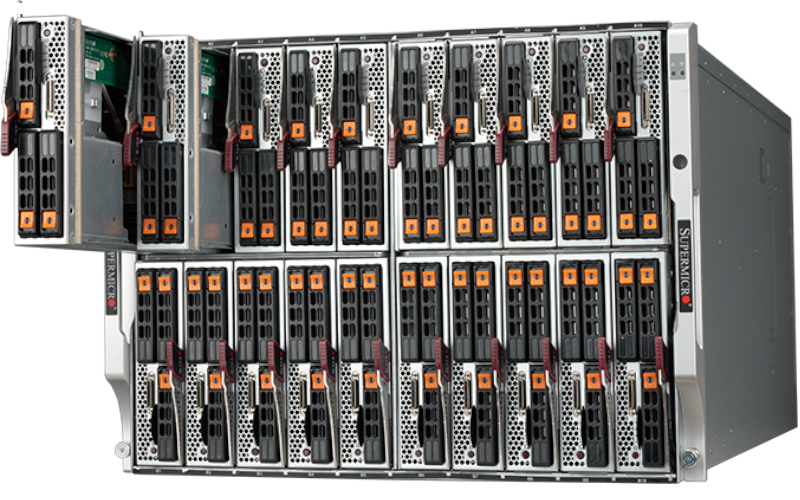
Blade server technology continues to evolve, driven by advancements in computing, networking, and storage technologies. This evolution is shaping the future of data centers and how organizations manage their computing resources.
Impact of Artificial Intelligence and Edge Computing
Artificial intelligence (AI) and edge computing are two transformative technologies that are having a significant impact on blade server design and deployment. AI-driven applications require significant computing power and data processing capabilities, while edge computing necessitates distributed computing resources closer to users and data sources.
AI and edge computing are driving the need for more powerful and efficient blade servers that can handle the demands of these emerging technologies.
- AI-driven workloads: Blade servers are increasingly being used to support AI workloads, such as machine learning, deep learning, and natural language processing. These workloads require high-performance computing resources, including CPUs, GPUs, and specialized hardware accelerators. Blade servers provide a scalable and efficient platform for deploying these resources.
- Edge computing: Edge computing involves processing data closer to the source, reducing latency and improving performance. Blade servers are well-suited for edge deployments, offering a compact and power-efficient solution for deploying computing resources in geographically dispersed locations.
Future Applications and Use Cases, Blade server
The combination of AI and edge computing is creating new opportunities for blade servers in various industries. Here are some potential future applications and use cases:
- Internet of Things (IoT): Blade servers can be used to process and analyze data from IoT devices, enabling real-time monitoring and control of connected systems. For example, in smart cities, blade servers can be deployed at the edge to collect and process data from sensors, traffic cameras, and other devices, enabling efficient traffic management and public safety.
- Virtual Reality (VR) and Augmented Reality (AR): Blade servers can provide the computing power needed to support VR and AR applications, which require high-bandwidth and low-latency processing. For example, in healthcare, blade servers can be used to power immersive training simulations for surgeons, improving their skills and reducing risks.
- High-Performance Computing (HPC): Blade servers are becoming increasingly popular for HPC applications, such as scientific research, financial modeling, and weather forecasting. Their scalability and efficiency make them ideal for handling large-scale computations and data analysis.
Real-World Examples and Case Studies: Blade Server
Blade servers have become increasingly popular in various industries, offering numerous advantages in terms of space efficiency, power consumption, and manageability. Real-world examples showcase the diverse applications and successful deployments of blade servers, highlighting their impact on business outcomes.
Examples of Successful Blade Server Deployments
Blade servers have found widespread adoption across various sectors, demonstrating their versatility and effectiveness. Here are some notable examples:
- Financial Services: Leading financial institutions, such as banks and investment firms, leverage blade servers for high-performance computing (HPC) applications, risk management, and data analytics. Their ability to handle large volumes of data and complex calculations makes them ideal for these demanding tasks.
- Healthcare: Hospitals and healthcare providers rely on blade servers for critical applications like electronic health records (EHRs), medical imaging, and patient management systems. Blade servers’ high availability and scalability ensure uninterrupted service, crucial for critical healthcare operations.
- Telecommunications: Telecom companies utilize blade servers for network infrastructure, core routing, and service delivery. The high density and power efficiency of blade servers allow telecom providers to optimize their data centers and reduce operational costs.
- Education: Universities and educational institutions use blade servers for research computing, online learning platforms, and administrative systems. Blade servers’ flexibility and scalability accommodate the growing demands of modern education systems.
- Government Agencies: Government agencies, including law enforcement and intelligence organizations, rely on blade servers for data storage, analysis, and security applications. Blade servers’ security features and performance capabilities meet the stringent requirements of government operations.
Case Study: A Global Retail Giant
A global retail giant faced challenges with its legacy IT infrastructure, struggling to meet the increasing demands of its online sales and customer service operations. The company decided to implement a blade server solution to address its scalability, performance, and energy consumption concerns.
- Challenges:
- Limited scalability to handle growing online traffic and customer data.
- High power consumption and cooling costs associated with traditional servers.
- Difficulty in managing and maintaining a large number of individual servers.
- Solution:
- Deployed a blade server system with high-performance processors, ample memory, and fast storage.
- Utilized virtualization technology to consolidate multiple applications onto fewer servers, optimizing resource utilization.
- Implemented a centralized management system for easier monitoring, maintenance, and updates.
- Impact:
- Significantly improved scalability and performance, enabling the company to handle peak traffic and customer demands.
- Reduced power consumption and cooling costs by consolidating servers and optimizing resource utilization.
- Simplified server management and maintenance, freeing up IT staff to focus on other critical tasks.
Impact of Blade Server Adoption on Business Outcomes
The adoption of blade servers has yielded significant benefits for organizations across various industries. These benefits include:
- Increased Scalability and Performance: Blade servers offer high density and scalability, allowing organizations to easily add or remove servers as needed, accommodating growth and fluctuations in demand.
- Reduced Power Consumption and Cooling Costs: Blade servers’ efficient design and shared resources minimize power consumption and cooling requirements, resulting in substantial cost savings.
- Simplified Management and Maintenance: Centralized management systems for blade servers simplify administration, monitoring, and maintenance tasks, reducing operational overhead and improving efficiency.
- Improved Security: Blade servers offer enhanced security features, such as physical security and access controls, protecting sensitive data and applications.
- Enhanced Business Agility: The flexibility and scalability of blade servers enable organizations to adapt quickly to changing business needs and market demands.
Final Review
Blade servers are a testament to the evolution of data center technology, offering a powerful and efficient solution for modern computing needs. Their ability to deliver high performance, scalability, and manageability makes them a preferred choice for organizations seeking to optimize their infrastructure and streamline operations. As technology continues to advance, blade servers are likely to play an increasingly vital role in shaping the future of data centers.
Blade servers, with their dense computing power, are often found in data centers. But did you know that you can also find a similar concept of compact power in the world of DIY crafts? Check out diy shrinky dinks , where simple drawings transform into miniature versions of themselves, much like how a blade server packs a lot of processing into a small space.
Just as blade servers are optimized for efficiency, shrinky dinks offer a creative way to maximize the potential of a single sheet of plastic.

